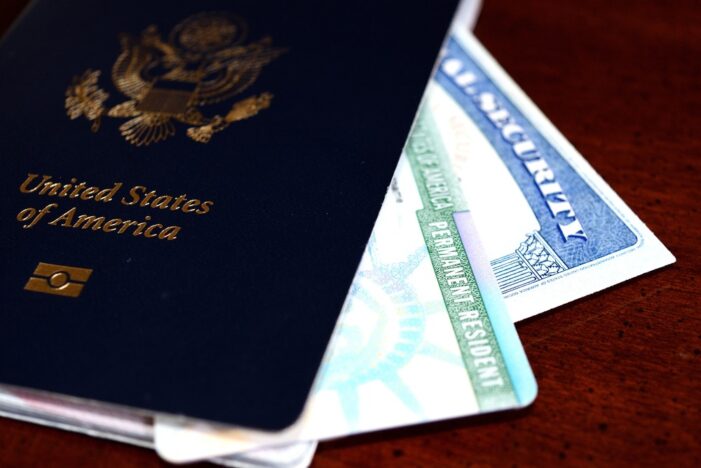By Walter Ewing, Immigration Impact
On September 28, Senator Alex Padilla (D-CA) introduced a bill in Congress that would allow millions of immigrants who have lived in the United States for many years to become Lawful Permanent Residents (LPRs). This pathway to LPR status (also known as a green card) would benefit both long-term undocumented immigrants and individuals who have been present in the country for years under a temporary immigration status, such as temporary workers, beneficiaries of Temporary Protected Status (TPS), and Dreamers.
Under this bill, immigrants who have lived continuously in the United States for at least seven years could apply for a green card. The bill would accomplish this simply by changing a provision of current immigration law known as “registry.”
What is “registry?”
The registry provision allows some long-term residents of the United States to apply for green cards even if they are undocumented or here under a temporary immigration status. Individuals can “register” for a green card if they entered the United States on or before a particular date (called the “registry date”), have lived in this country continuously since they arrived, and are of good moral character. All applicants must pass criminal and national security background checks.
Registry was created in 1929. Since then, the registry date has only been advanced four times by Congress. The last time was in 1986, when the date was set at January 1, 1972. This means that only non-citizens who came to the United States on or before that date can apply for green cards under the registry provision. The current registry date is now so far in the past that very few people are eligible to apply anymore. But Congress can advance the registry date at any time, which would allow millions of non-citizens to apply for green cards. Those applicants who receive green cards could go on to become U.S. citizens.
What would the registry bill do?
The bill introduced by Sen. Padilla—“Renewing Immigration Provisions of the Immigration Act of 1929” (S. 4974)—would create a “rolling” registry date. Rather than setting a specific cut-off date, the bill would require seven years of continuous residence in the United States before an individual could apply for a green card under the registry provision. The exact date the applicant came to this country would not matter as long as the applicant had been here for at least seven years. The bill would not make any changes to the criminal and national security background checks that all applicants must pass before they can receive a green card.
S. 4974 is a companion bill to H.R. 8433, which was introduced in the House of Representatives on July 20 by Rep. Zoe Lofgren (D-CA).
How many people would benefit from the registry bill?
Not all non-citizens who are long-term residents of the United States would qualify for green cards under the registry bill. Some would be ineligible because of criminal convictions or extended absences from the country. However, it is likely that many millions of people would qualify.
According to the Department of Homeland Security, there were 11.4 million undocumented immigrants in the United States as of 2018. Roughly 47% (5.4 million people) had arrived before 2000, while another 37% (4.2 million) had arrived between 2000 and 2009. Most of these long-term residents of the United States would probably qualify for green cards under the new registry bill.
These figures do not even include the many other non-citizens with temporary immigration status who could also be eligible for green cards under the bill.
How would the registry bill impact the U.S. economy?
Making millions of non-citizens eligible for green cards, and eventually U.S. citizenship, would also provide a boost to the U.S. economy. According to FWD.us, the roughly 6 million workers who are now undocumented contribute $126 billion to the U.S. economy and pay $35 billion in taxes each year.
If these workers could become U.S. citizens, their wages would increase. This would raise their annual contribution to the U.S. economy by $83 billion and their tax payments by $27 billion.
Is the bill likely to pass?
So far, the registry bill in the Senate has three co-sponsors. The companion bill in the House of Representatives has 64 co-sponsors. Unfortunately, both bills face long odds in the current Congress, but they are important markers that will inform the immigration debate on Capitol Hill going forward.
Both bills also serve as a reminder that a relatively simple change to current immigration law would make green cards accessible to millions of non-citizens. Opening up eligibility for green cards would give millions of people—many of whom are long-time neighbors, family members, friends, and coworkers—a chance to establish permanent and stable roots in this country.

